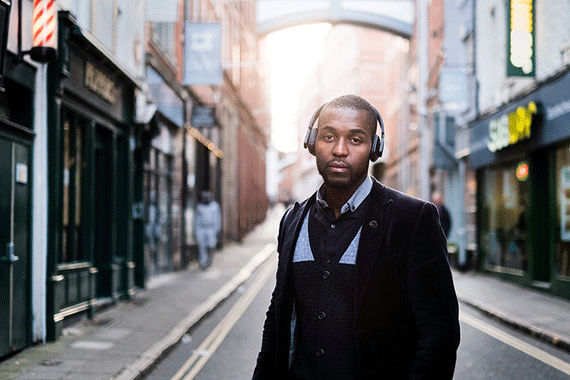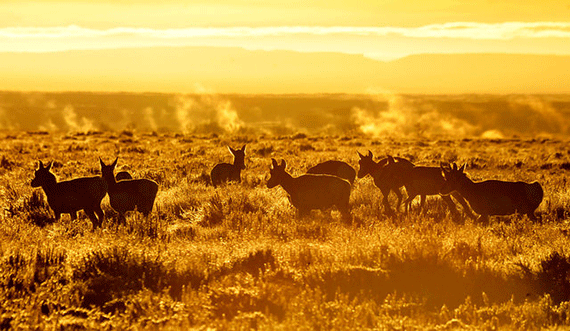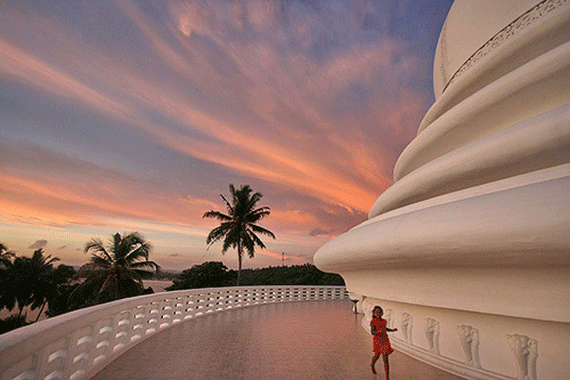In photography, it’s all about lighting. The most successful photographers are the ones most able to control, manipulate, and use it to capture what they see in their mind’s eye. There are generally two approaches when it comes to lighting:

Photo by Peter McConnochie; ISO 400, f/1.4, 1/500-second exposure.
- Use what’s there. Modify and adapt to it. This is where most photographers start out.
- Come up with a totally staged pre-conceived vision and light the scene starting from scratch, like working in a controlled environment of a studio—like an artist illustrating on a blank canvas.
In both instances the photographer must understand light well to predict, not only what the camera will capture, but also whether the image will reproduce faithfully in print.
The first approach requires subtlety. This means you may or may not choose to supplement the light already in the scene. This is usually how photojournalists work.
They often meter their scene after deciding where their subject will be and determine the number of f-stops between highlight and shadow. Then they boost the shadow area if there are important details there.
The key is to preserve the mood and feel of the scene. This approach usually requires little equipment since the photojournalist works mostly on location.
The second approach resembles how an artist paints. He paints a scene by lighting every element.
If he’s outdoors, and if he wants to create a picture that is natural, then his scene will have to appear to have just one dominant light source—like how our one sun lights our natural world.
The operative word here is “appear to have one dominant light source.” He will most likely use more than one light source because of the contrast, but his shadows are carefully controlled.

Photo by USFWS Mountain-Prairie; ISO 800, f/16.0, 1/1600-second exposure.
The ambient light is not a factor at all. It’s almost as if the photographer is working in a dimly lit room and has to light everything in the scene.
By carefully positioning lights and varying their intensity, a photographer creates shadows and highlights selectively. How realistic or natural the scene looks depends on the photographer’s skill in execution and conceptualized image.
Even though photography is a two-dimensional art form, good control of light creates three dimensions by giving pictures depth. The good use of shadow and highlights in a picture is what conveys depth.
A common misconception about “good lighting” is that there has to be a ton of it. Well, maybe not a ton, but an eye-squinting-tear-producing amount.
A scene that is so bright like at high noon tends to be problematic. Light levels with such intensity require small apertures so that invariably the photographer has to deal with too much depth-of-field.
So good light doesn’t necessarily mean an exposure of 1/2000 of a second, at f/11, and ISO 100. It all depends on what you’re photographing. There is such a thing as too much depth-of-field.
If you’re photographing something that’s moving fast, and if your aim is to “freeze” the moving object, then in that particular instance, that suits your purposes, so it is good light. You’re able to use high shutter speeds to arrest that motion.

Photo by Roberto Saltori; ISO 400, f/5.6, 1/60-second exposure.
That high noon light is probably only good for gunfights. There are very few instances when a photographer will choose that time of the day to schedule a shoot.
Well-lit photographs don’t usually happen by accident. If shooting in available light, you can bet the photographer planned to be at that very spot at that time, after doing some reconnaissance beforehand.
Possible places with good directional light which can give you a nice ambiance or mood include the following:
- Doorways and windows
- Reflected light (e.g sunlight bouncing off the water in late evening or early morning)
- Incandescent light in homes
- Candlelight and campfire light
About the Author:
A Riverside-based freelance photographer, Peter Phun also teaches photography at Riverside City College. He does portraits, weddings, and editorial work. He writes about photography, Macs, and the internet. He also designs websites and is a stay-at-home dad.
Go to full article: Tips for Successful Lighting in Photography
What are your thoughts on this article? Join the discussion on Facebook
PictureCorrect subscribers can also learn more today with our #1 bestseller: The Photography Tutorial eBook
The post Tips for Successful Lighting in Photography appeared first on PictureCorrect.